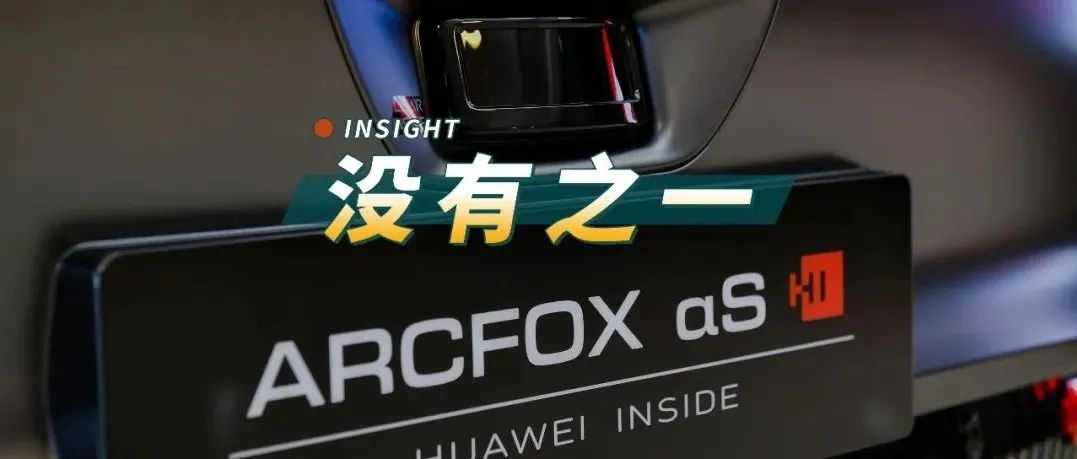Author: The Office
Editor: The Office
On May 7th, the brand-new HI-version of the Arcfox Alpha S was officially launched, with a price of 397,900 yuan for the advanced version and 429,900 yuan for the high-end version.
Liu Yu, Vice President of BAIC Group and Chairman of BAIC New Energy, said at the press conference, “The new HI-version of the Arcfox Alpha S is a benchmark product and also a symbol of the intelligent transformation of BAIC New Energy.”
The profound meaning behind this sentence is that the “1873 Davidson Innovation Laboratory” jointly established by BAIC New Energy and Huawei after 4 years of research and development has borne fruit. The brand-new HI-version of the Arcfox Alpha S is the product of the combination of BAIC New Energy’s three-electric technology, platform technology, and vehicle manufacturing capabilities with Huawei’s ICT technology.
From the Arcfox’s IMC architecture of the vehicle model development foundation and the indispensable 5G & Ethernet electronic architecture to Huawei’s Hongmeng cabin and ADS (Advanced Driving Solution) intelligent driving solution, the strength of the brand-new HI-version of the Arcfox Alpha S is destined to be remarkable.
Two Partners Strive for Excellence, One World-Class Car
“At the end of the day, it all goes back to the IMC architecture with support for full redundancy under the Arcfox brand, which means that Arcfox has the qualifications to undertake high-end intelligent driving systems and intelligent cabins.”
In January 2019, Arcfox and Huawei formed an alliance to jointly establish the “1873 Davidson Innovation Laboratory”. The number 1873 originates from the birth year of the world’s first four-wheel electric truck made by Britishman Robert Davidson. Hence, the R&D of the brand-new HI-version of the Arcfox Alpha S began.
Until a year ago, the Arcfox Alpha S equipped with Huawei ADS drove out of the Huawei Shanghai Research Institute, passed through the crossroads, and passed the illegally parked delivery cyclists, bringing tremendous pressure to all other practitioners in China’s intelligent driving field.
Perhaps we need to review the basic hardware configuration of ADS on the brand-new HI-version of the Arcfox Alpha S:
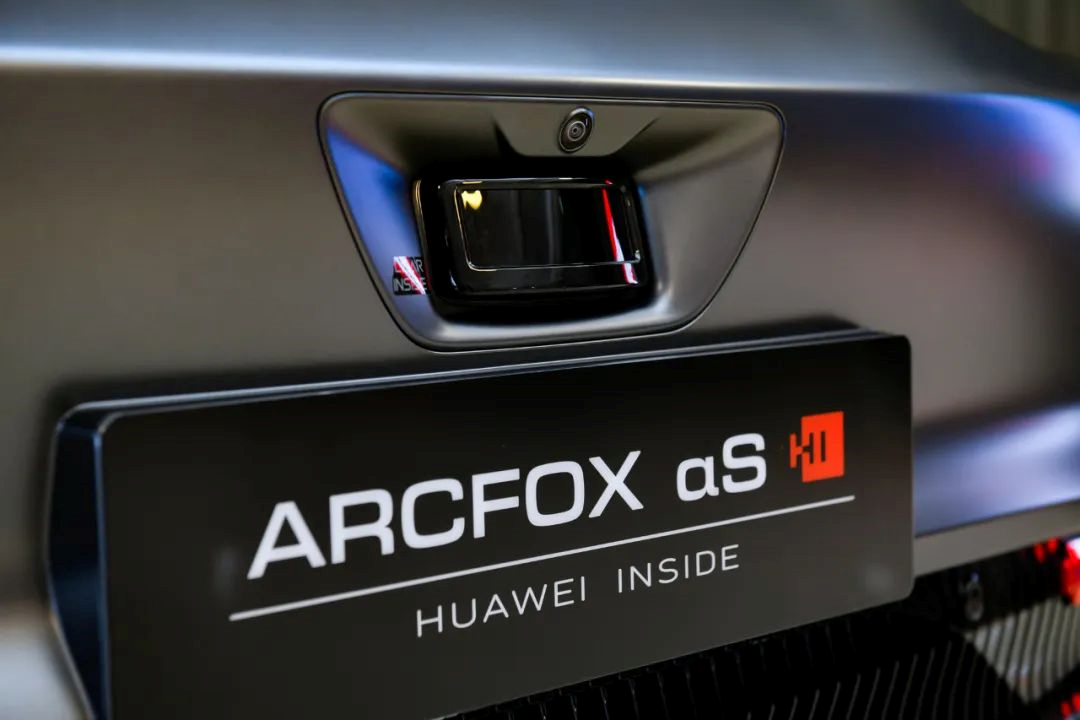
- 3 lidars (126 lines), maximum detection distance of 200 meters, and a horizontal field of view of 120°, completing an “equivalent 300° “viewing angle coverage
- 13 cameras (4-front + 4-peripheral front/back perception + 1 rearview + 4-surrounding cameras), 5 million pixels, with a pixel density basically comparable to that of the rumored Tesla HW 4.0 camera
- 6 millimeter-wave radars, with a maximum detection distance of 250 meters
- 12 ultrasonic sensors- Huawei MDC 810 Computing Platform (400 Tops)
Yu Chengdong, Executive Director and CEO of Huawei Terminal BG and CEO of Intelligent Car Solutions BU, commented at a press conference yesterday that: the Advanced Driving System (ADS) we have developed is currently the most powerful intelligent driving system in terms of hardware architecture in the world.
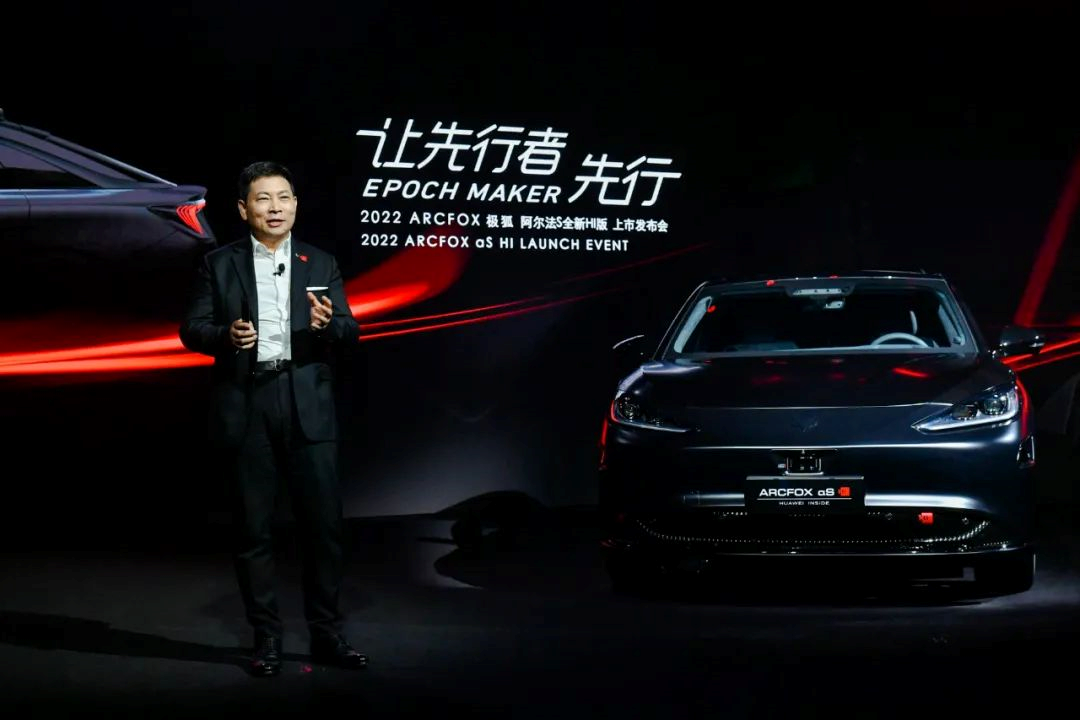
However, if we look at it from the industry perspective, ADS is far ahead of its competitors not only in terms of hardware, but also in software engineering. ADS is the first system in China to support point-to-point intelligent driving scenarios for highways, parking, and urban areas.
According to the press conference, ADS has targeted optimizations for classic problems in highway scenarios, including construction sections, irregular trucks, toll stations, and on/off-ramps, achieving point-to-point connectivity for high-speed scenarios. This also makes the Alpha S of Jihoo the only model with this intelligent driving capability.
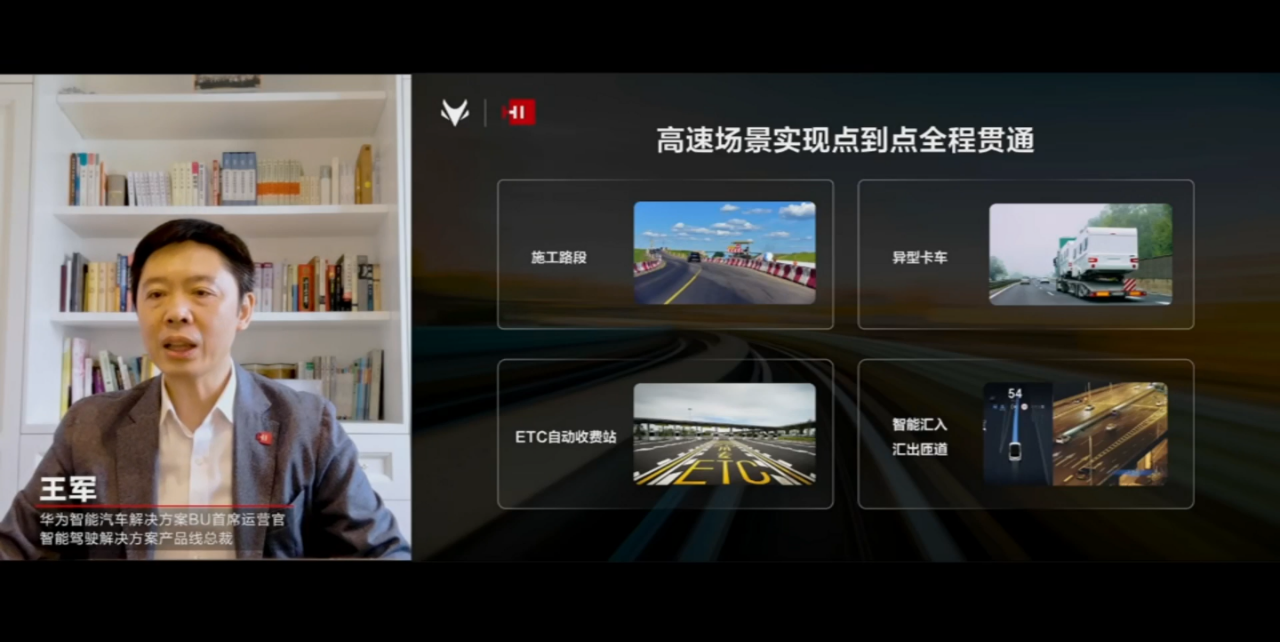
As for driving out of the highway and into the city, we had already witnessed ADS’s algorithmic capabilities in urban open-road scenarios back in April last year. In typical urban scenarios such as unprotected left turns, dynamic games, and congestion following, ADS has shown good algorithmic performance.
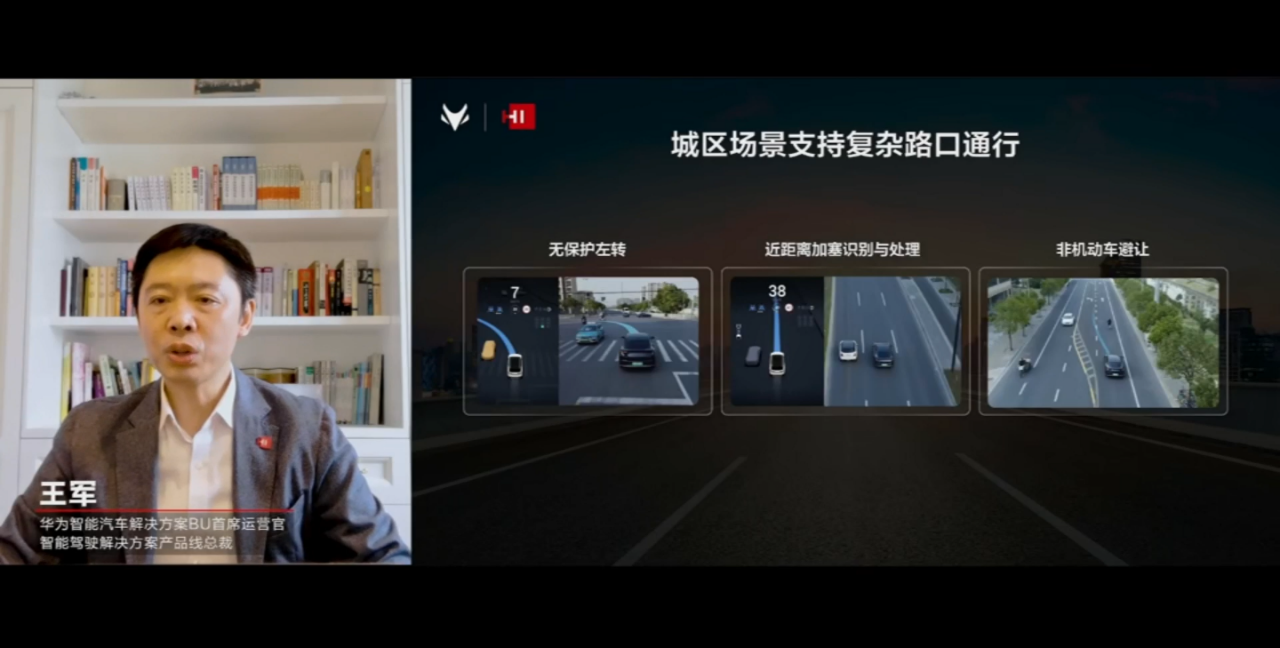
Regarding its performance in parking scenarios, Jihoo demonstrated its performance in automated parking through a video presentation at last night’s press conference, which includes the recognition and control of not only regular horizontal, vertical, lateral, and slanted parking spots, but also head-in parking spots, irregular parking spots, and even fake parking spots.
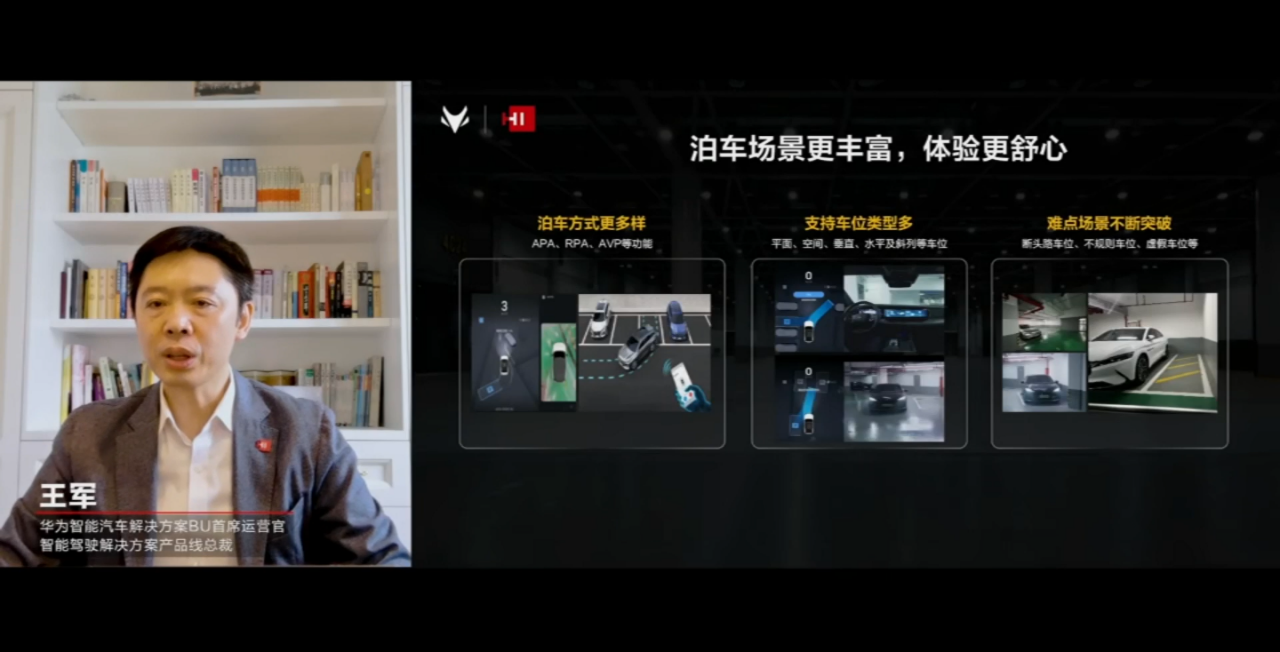
Of course, the new Alpha S of Jihoo and a host of other brands that have offered demo rides on urban open roads for a long time have long faced questions such as “How long will it take from demo to large-scale implementation?”. Unfortunately, Jihoo did not disclose specific information about the first batch of cities or regions that will open the ADS at the press conference yesterday.According to the plan announced last year, the first batch of cities where ADS will be launched will focus on first-tier cities such as Beijing, Shanghai, Guangzhou, and Shenzhen, with subsequent updates released quarterly. In the pre-release warm-up, Jidu Auto stated that ADS has undergone generalized testing on more than 1.2 million kilometers of mileage, covering major urban areas from Beijing to Shanghai. As a reference, the total length of the country’s highways and elevated roads is currently approximately 330,000 kilometers.
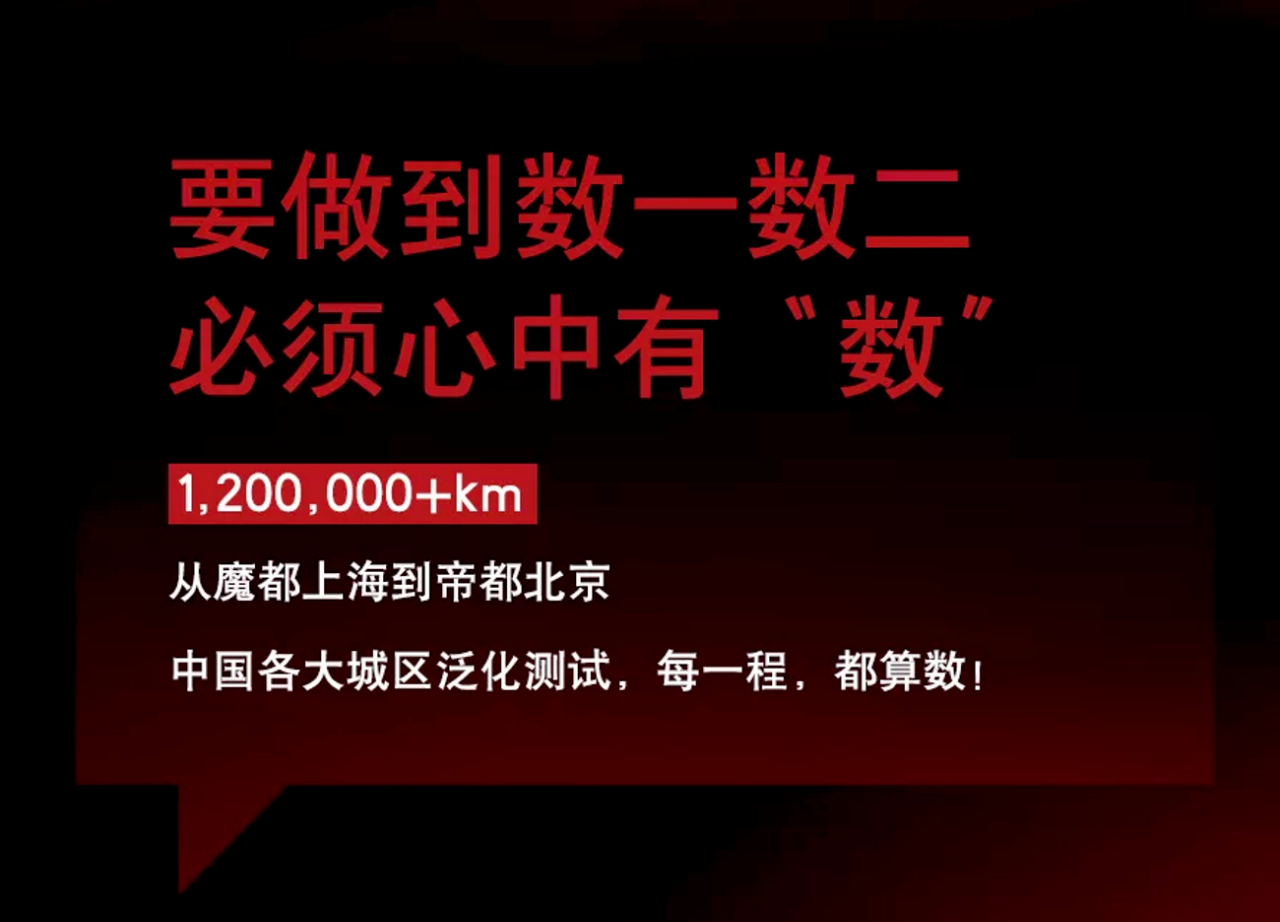
Additionally, Jidu Auto revealed that the ADS city road test drive event, originally planned for a week, was postponed due to the pandemic. Therefore, it can be anticipated that the Jidu Alpha S new HI version will soon enter the first batch of first-tier cities.
Moreover, the redundant backup design of the ADS execution mechanism, which includes perception, decision-making, steering, autonomy, architecture, and power, has been implemented. The decision-making part synchronously calculates with 2 computing chips, serving as mutual redundancy. The steering and braking use dual controller design. ADS system has also implemented 2-way communication design with braking, steering, and driving in terms of architecture.
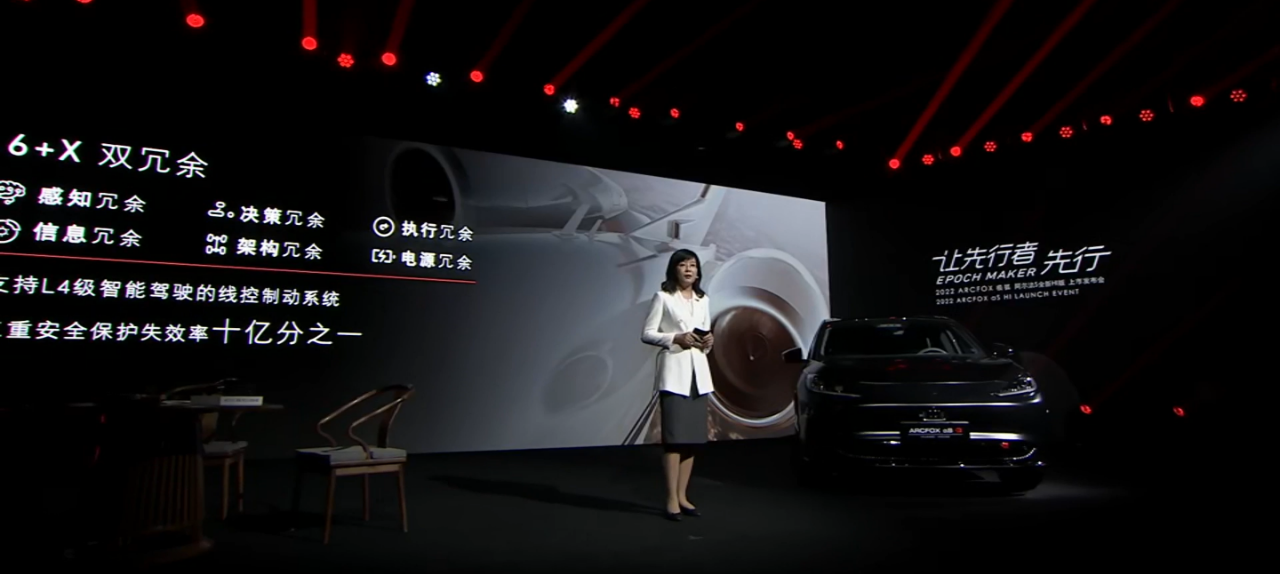
In summary, Jidu Auto and Huawei have invested significant resources and efforts to make ADS more in line with the requirements of automotive standards, which implies higher safety. It is worth mentioning that in addition to Huawei’s hardware engineering capabilities, the IMC architecture of Jidu Auto and the support for high computing power, 5G & Gigabit Ethernet are the foundation of all of this, providing giant bandwidth requirements for 3 laser radars and a full-car camera with a resolution of 5 million pixels, and even the soil that will bring Hongmeng Cabin to fruition, which we will soon discuss.
As a side note, the vehicle’s body torsional rigidity reaches 60,000 Nm/degree, making it the most rigid body among all mass-produced vehicles. From this perspective, one may gain an understanding of the rich connotation beyond ADS that extends to the entire vehicle level, as mentioned by Dr. Chengdong Yu.
In fact, the advanced and premium versions of the Jidu Alpha S new HI edition only differ by CNY 32,000 in terms of actual configuration, which is limited to 3 features, namely the ICA city intelligent cruise assist, NCA city intelligent driving and navigation assist, and AVP automatic valet parking. This also reflects the weight of ADS on the Jidu Alpha S new HI version.
IMC Architecture Sets the Stage, Hongmeng Gets OnThe all-new HI version of the Geely Lynk & Co. Zero Alpha S features an intelligent cockpit equipped with a 12.3-inch instrument screen and a 21.7-inch central control screen with a resolution of 3840*720. However, due to such a wide aspect ratio, there are certain limitations for displaying some content, such as navigation information, which requires specific optimization. However, the true value of this cockpit lies not in the hardware, but in the fact that it runs on Huawei’s HarmonyOS, which has been specifically designed for cars.
At the hardware level, Geely’s IMC architecture supports 5G communication, gigabit Ethernet and high computing power for the underlying technology base of HarmonyOS.
The all-new HI version of the Geely Lynk & Co. Zero Alpha S is equipped with a high-performance Kirin car machine module. In addition, Huawei’s Car BU has done a lot of integrated R&D on HarmonyOS based on “driving scenarios” and “Huawei’s consumer electronics ecosystem.” For example, the all-new HI version of the Geely Lynk & Co. Zero Alpha S supports the “uninterrupted call” function, which enables users to make video calls using the in-car camera, central control screen and other Huawei devices such as smartphones, pads, and smart screens. Video calls made with smartphones outside the car can seamlessly transition to the central control screen when entering the car.
However, compared to these differentiated functions that integrate consumer electronics ecosystems, the fundamental appeal of the HarmonyOS cockpit lies in the fact that Huawei, in conjunction with the world’s second largest smartphone manufacturer and its development resources in the field of human-machine interfaces, human-machine interaction, and operating systems, based on Geely’s IMC architecture, jointly defines and develops the central control screen for cars. The investment in such development resources is not comparable to that of competitive companies.
Therefore, the first implementation of HarmonyOS Cockpit allows for numerous functionalities such as without the need for a wake-up word, partition control, continuous wake-up words and commands, feedback interruption, additional dialogues, fuzzy voice, and multi-turn dialogues based on the context.
In November 2021, Class Star Channel experienced the “development version” of the HarmonyOS cockpit of the all-new HI version of the Geely Lynk & Co. Zero Alpha S. Although it was still in the development phase at the time, the smoothness and ease of use of the HarmonyOS cockpit were already quite impressive.
It can be expected that, before the legendary Apple car goes into mass production, the HarmonyOS cockpit will be the only intelligent cockpit in the industry that can fully integrate with the mobile Internet ecosystem for a period of time.
20 Consecutive Zero-to-Hundred Accelerations
Perhaps due to the too much attention on the intelligent driving and intelligent cockpit of ARCFOX, there is not much discussion about the ARCFOX Alpha S new HI version in the high-voltage electrical system and powertrain.
The new ARCFOX Alpha S HI version is equipped with a front asynchronous and rear permanent magnet all-wheel drive powertrain, with a peak power of 473 kW and a 0-100 km/h acceleration of 3.5 seconds. This three-in-one oil-cooled electric machine was jointly developed by ARCFOX and Huawei, supporting active lubrication technology for the reducer, direct winding cooling, and a highest speed exceeding 17300 rpm, which also enables a top speed of over 200 km/h for the vehicle.
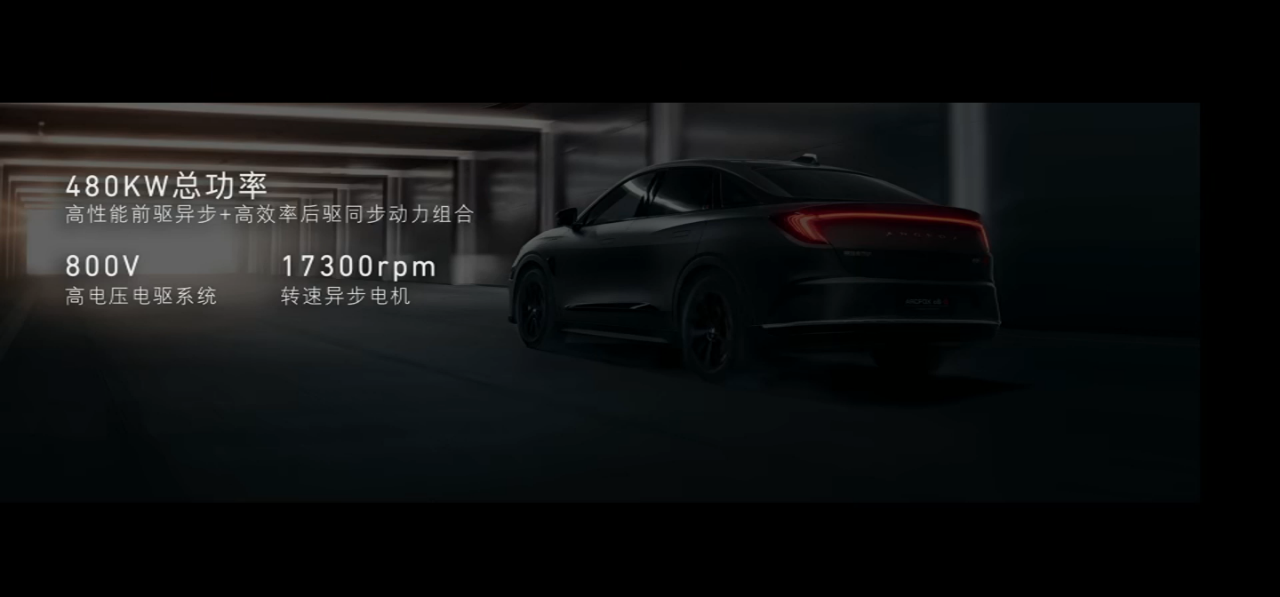
The data released by ARCFOX at the press conference shows that the new ARCFOX Alpha S HI version can achieve 20 consecutive zero-to-hundred accelerations without any decline. This means that the high-voltage thermal management design of the entire vehicle has reached an extremely high level. Considering that the weight of the rear electric machine is only 91 kg, and the power density is as high as 2.8 kW/kg – almost surpassing all products of new car companies – we are even more impressed by the thermal management design of the new ARCFOX Alpha S HI version.
In terms of charging, relying on the 800V high-voltage platform from ARCFOX and the NCM 2.2C battery pack with continuous charging ratio from CATL, the new ARCFOX Alpha S HI version achieves a maximum fast charging power of 187 kW, and can replenish about 200 km of range in 10 minutes.
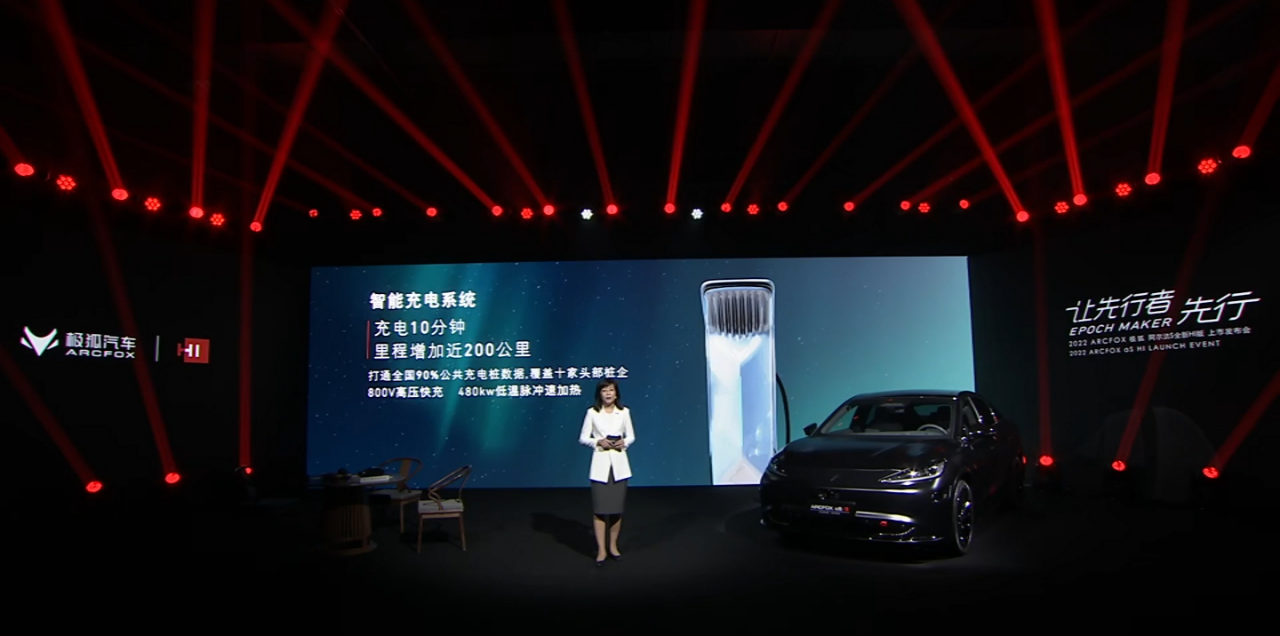 In summary, for the brand-new HI version of the Alpha S model from JH Automotive, Huawei has almost brought out all the cutting-edge technologies that it can currently offer to mass-produce the car, achieving a great landing with the IMC architecture of JH Automotive and the electronic and electrical architecture that supports high computing power. It can be seen that both JH Automotive and Huawei have put in tremendous efforts to enhance the competitiveness of this product.
In summary, for the brand-new HI version of the Alpha S model from JH Automotive, Huawei has almost brought out all the cutting-edge technologies that it can currently offer to mass-produce the car, achieving a great landing with the IMC architecture of JH Automotive and the electronic and electrical architecture that supports high computing power. It can be seen that both JH Automotive and Huawei have put in tremendous efforts to enhance the competitiveness of this product.
In a sense, both JH Automotive and Huawei need a popular intelligent electric product to prove themselves. With such an opportunity, the sales trend of the brand-new HI version of the Alpha S model from JH Automotive is worth looking forward to.
This article is a translation by ChatGPT of a Chinese report from 42HOW. If you have any questions about it, please email bd@42how.com.
